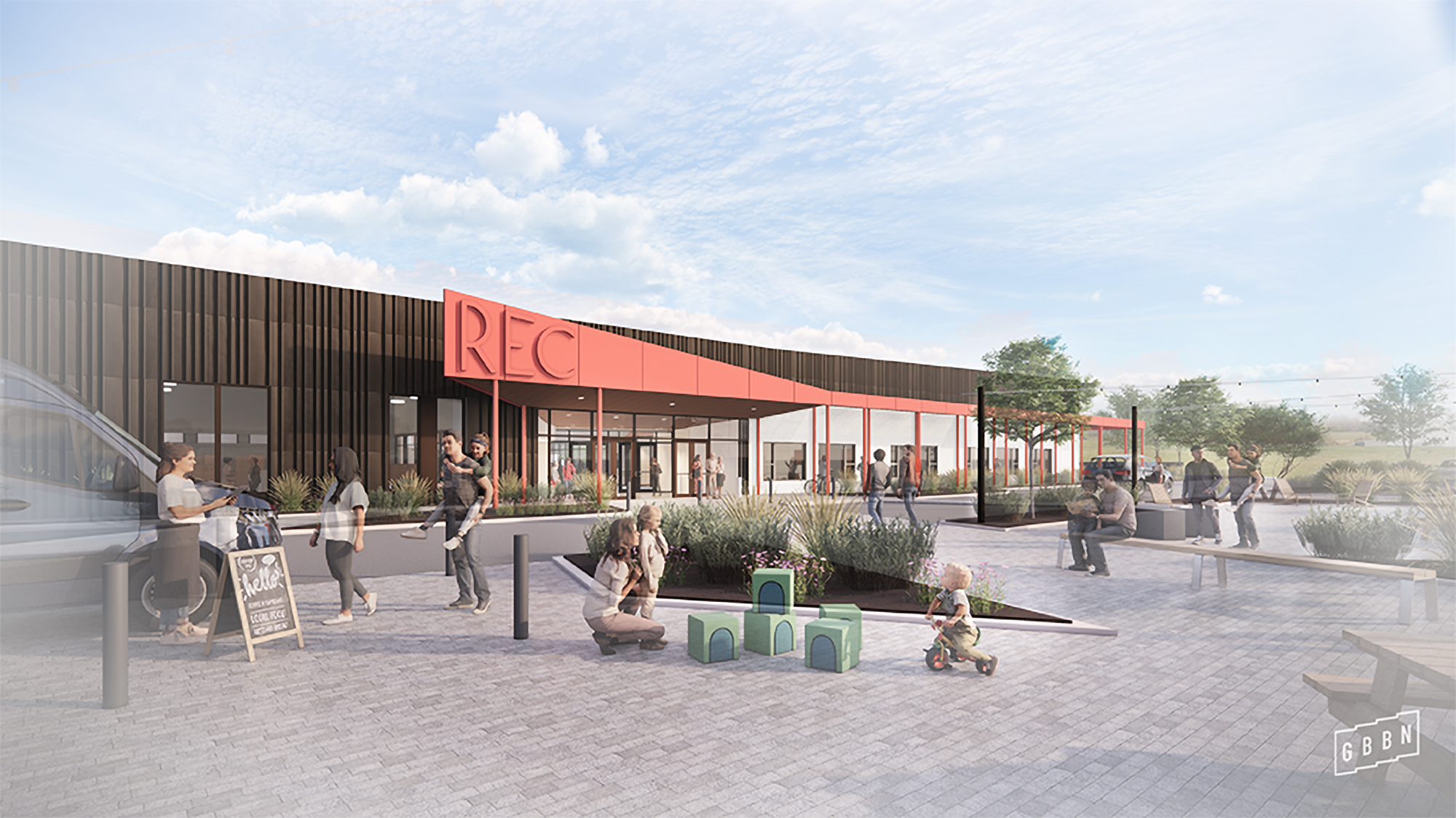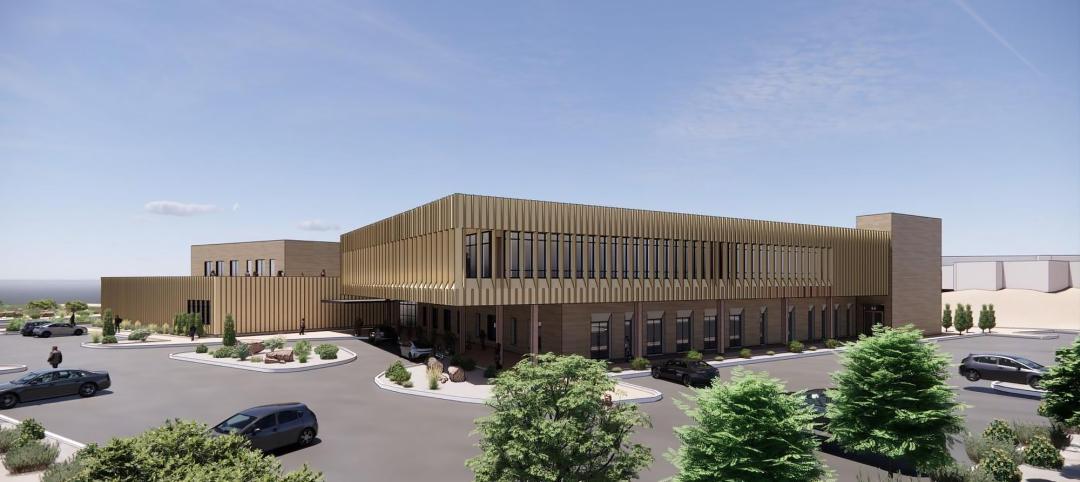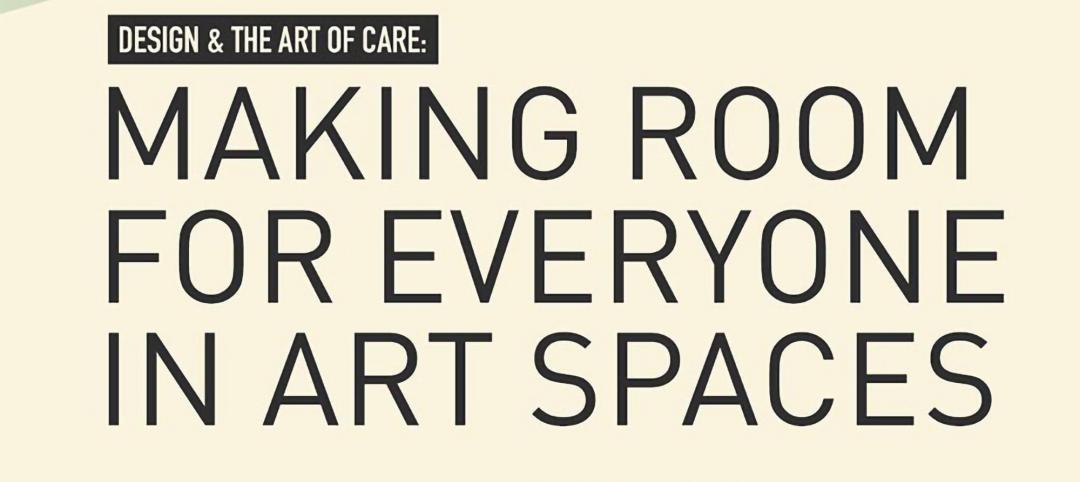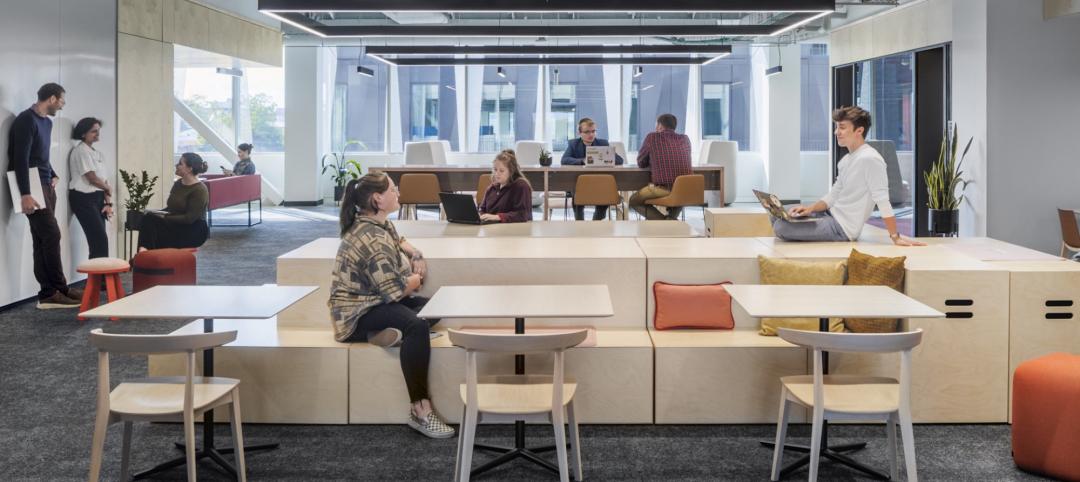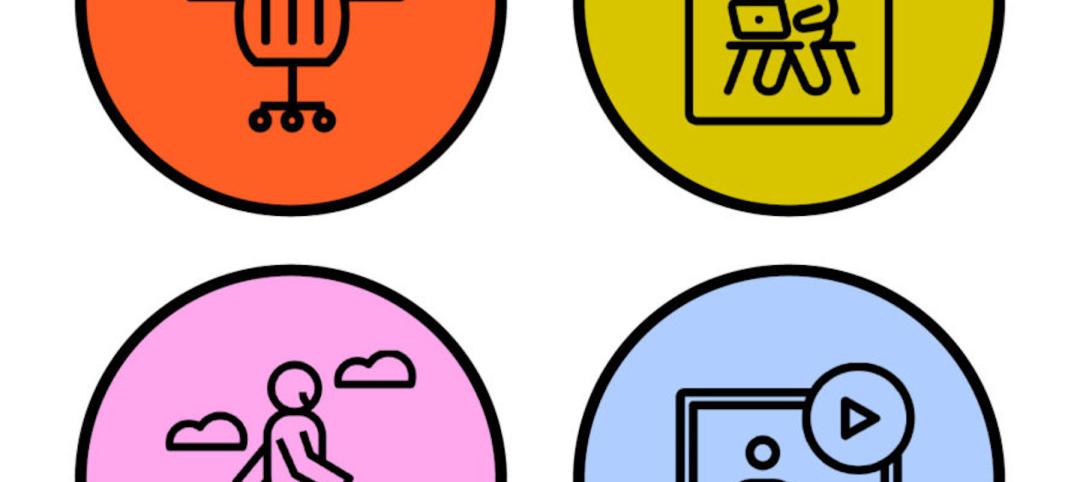Rush County, Ind.,—a vibrant community in central Indiana—had an abandoned big box store and an even bigger dream. Their dream was to unite disparate community programs into one place that breaks down social, economic, and physical barriers to promote connectivity, growth, and togetherness. We’re working with their community leaders to make their dream a reality.
The transformation of a big box store into a community hub is made possible by co-locating key community resources together under one roof. The new REC (Recreation, Education, Collaboration) Center will house the Rushville Public Library, the Rush County Community Assistance Food Pantry, a new childcare center, and a fitness center with a family pool and basketball court. There will also be shared office space for social service agencies including the Special Supplemental Nutrition Program for Women, Infants, and Children (WIC), Interlocal Community Action Program, Firefly Children & Family Alliance, and a dedicated gathering space and kitchen for the Rush County Senior Citizens Center. Also planned are a large community room, public meeting rooms, and an interior courtyard that are shared amenities for everyone.
As early partners on this effort, we’ve helped the project’s Steering Committee in a variety of impactful ways, including supporting their fundraising efforts with renderings and narratives that excite donors. “Two years ago, we didn’t have a penny,” Rush County Economic Community Development Corporation Director John McCane told The Greenburg Daily News. “If plans all come together as we are anticipating, we should have the final commitments of $24 million to carry out this transformative project.”
1. Leveraging an Early Partnership
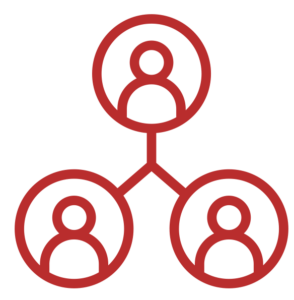
Creating a new identity and purpose for an abandoned big box store takes a village of different lenses. There needs to be creative collaboration between local knowledge and industry expertise. Assembling the project team early increases efficiency and improves collaboration. Engaging the architect and interior designers when a project is still in its dream state allows the team to think big picture, while also balancing the nitty gritty details. The REC Center Steering Committee engaged our design team at the very beginning of the project to help illustrate the vision for initial grant funding. Throughout the design process, we have brought our expertise on libraries, workplace, and adaptive reuse projects to help inform programming, establish a cohesive design story, and guide budget decisions.
Renovating an existing building for new, mixed uses comes with its own challenges but establishing a working partnership with stakeholders early has led to a smoother process. Additional project team members for the REC Center include: REC Center Steering Committee, Rush County Community Foundation, Weddle Brothers Construction, Triangle2, and Taft Law.
2. Connecting Communities
When a big box store vacates a site, it leaves behind a gaping hole in the economy of that small town and a building that isn’t designed to serve the community. My colleagues Stefan Cornelis and Eric Puryear have written previously about architectural strategies for breaking down big box retail structures that were designed for a single, short-term, activity—shopping—rather than learning, gathering, and socializing. In conjunction with structural interventions that will create a new identity for the building through an updated façade, our early programming work with the REC Center partners helped identify each of the partners’ needs, recognized overlaps in these needs, and created efficiencies in the program. As a result, the partners saw how shared amenities would be mutually beneficial for everyone.
One of those shared amenity opportunities was the parking lot. Often separated from the street and pedestrian traffic by a moat of parking, big box retail outlets can seem like inhospitable islands in the landscape. For the REC Center, we are transforming the parking lot into a destination by designing a plaza for food trucks, a safer pick up and drop off area, and a public outdoor gathering space. The plaza’s design will help create another way for the community to connect to one another.
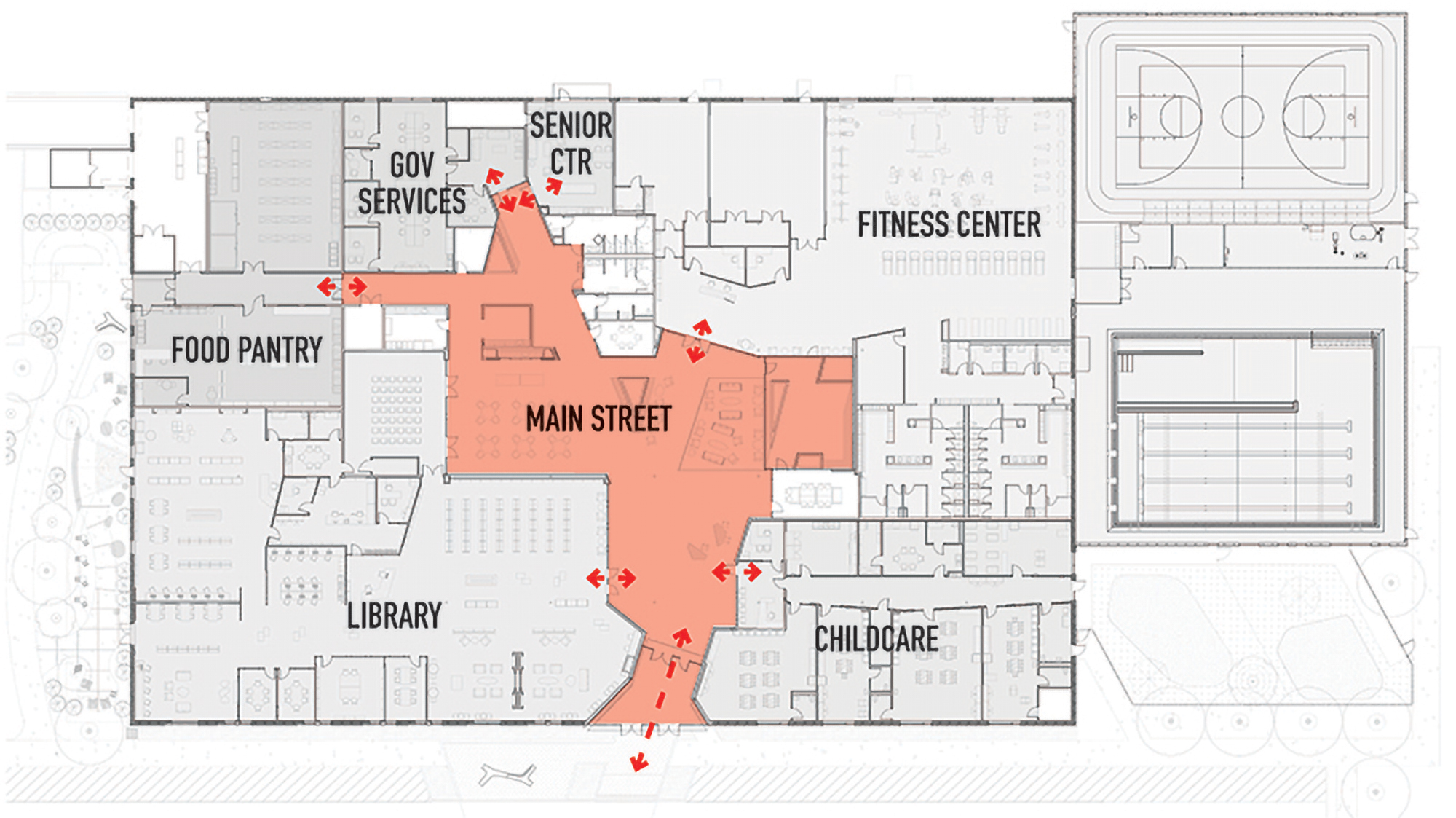
3. Creating a Whole Greater Than the Sum of its Parts
Within the REC Center, the public gathering space from the outdoor plaza extends into the interior “Main Street.” This utilizes the existing building’s large open volume to provide a welcoming, public space. Interior planter benches and lots of daylight from the courtyard and skylights are key to bringing the outside in. Warm wood elements highlight the entrances to the different programs and are complemented by acoustic panels and an upholstered seating area with views of the courtyard. This sets the stage for new synergies and partnerships to form. Visitors coming to the library may stay for a pop-up yoga class. Someone coming for the food pantry can conveniently stay for a library-sponsored cooking class or sign up for a library card.
In Rush County, food insecurity, reliable transportation, and digital equity are prevalent issues. By co-locating the programs in one location, this decreases travel time and transportation needs, while also providing a dignified experience when engaging with social services. Mutually beneficial programming can extend beyond individual “store fronts” to the Main Street and meeting rooms. It’s a one-stop shop that is easy and convenient.
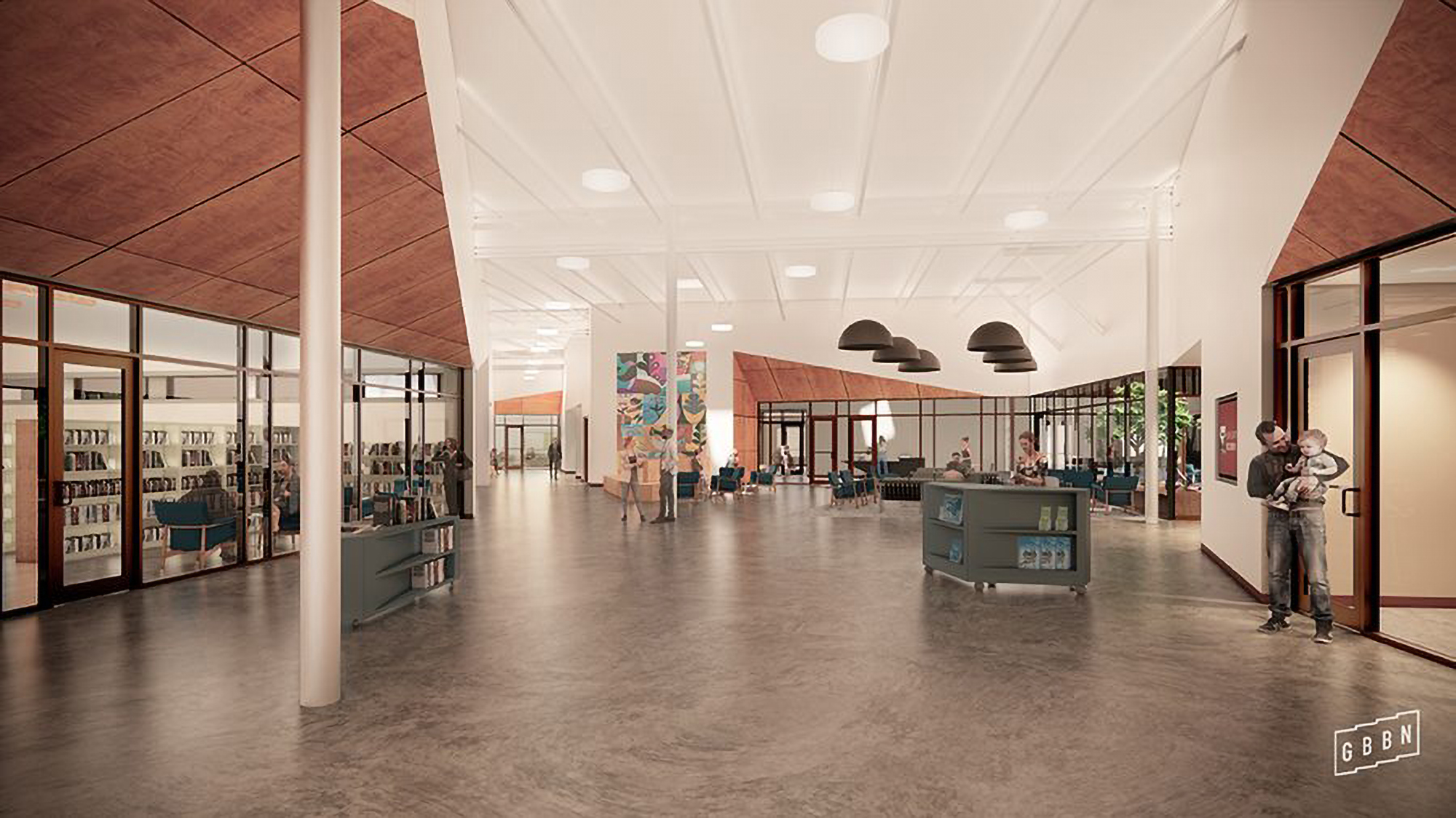
“The beauty of this type of facility is that it can change over time,” Rushville native Dan Moster told The Greenburg Daily News. Moster, along with John McCane and other local leaders, is a member of the project Steering Committee whose passion has kept fundraising moving forward. “You get to that point where demand and interest expand. The Main Street design opens the door to where a lot of partnerships can thrive,” says Dan.
Thriving partnerships, established early, are key drivers to transforming an abandoned retail property into a new community asset. It truly does take a village. The village for this project includes community leaders with local knowledge, the expertise of architects and interior designers who create visionary designs that support client goals and budget requirements, and the construction managers who work collaboratively to find cost-effective solutions to the design strategies that support the project’s vision and goals.
Want to know more about how we work to activate vacated retail? Read Thinking Outside (And Inside) The Big Box Store: From TJ Maxx to Next Generation Library and Six Strategies For Giving New Life To Ghost Retail Buildings.
Read more about our adaptive reuse projects here.
Learn more about our libraries or our work with hospitality and community centers.
More from Author
GBBN | Feb 26, 2024
GBBN's Inflation Reduction Act Calculator goes live
GBBN has publicly released its IRA Calculator, a tool that helps you understand funding opportunities in the IRA for sustainable design.
GBBN | Jan 25, 2024
Tactical issues for renovating university research buildings
Matthew Plecity, AIA, ASLA, Principal, GBBN, highlights the connection between the built environment and laboratory research, and weighs the benefits of renovation vs. new construction.
GBBN | Dec 14, 2023
What's next for affordable housing in 2024?
As 2023 draws to a close, GBBN’s Mary Jo Minerich and Amanda Markovic, AIA sat down to talk about the future. What’s next in terms of trends, technology, and construction of affordable housing?
GBBN | Oct 11, 2023
Leveraging land and light to enhance patient care
GBBN interior designer Kristin Greeley shares insights from the firm's latest project: a cancer center in Santa Fe, N.M.
GBBN | Jun 20, 2023
Designing arts spaces that curate inclusivity
GBBN's Julia Clements and Marcene Kinney, AIA, LEED AP, talk tips for designing inclusive arts spaces.
GBBN | Mar 22, 2023
Onsite prefabrication for healthcare construction: It's more than a process, it's a partnership
Prefabrication can help project teams navigate an uncertain market. GBBN's Mickey LeRoy, AIA, ACHA, LEED AP, explains the difference between onsite and offsite prefabrication methods for healthcare construction projects.
GBBN | Mar 8, 2023
Is Zoom zapping your zip? Here are two strategies to help creative teams do their best work
Collaborating virtually requires a person to filter out the periphery of their field of vision and focus on the glow of the screen. Zoom fatigue is a well-documented result of our over-reliance on one method of communication to work. We need time for focus work but working in isolation limits creative outcomes and innovations that come from in-person collaboration, write GBBN's Eric Puryear, AIA, and Mandy Woltjer.
GBBN | Jan 12, 2023
Invest in existing buildings for your university
According to Nick Sillies of GBBN, students are increasingly asking: "How sustainable is your institution?" Reusing existing buildings may help answer that.
GBBN | Dec 5, 2022
How to foster collaboration and inspiration for a workplace culture that does not exist (yet)
A building might not be able to “hack” innovation, but it can create the right conditions to foster connection and innovation, write GBBN's Chad Burke and Zachary Zettler.
GBBN | Oct 27, 2022
Who are you? Four archetypes shaping workspaces
The new lifestyle of work requires new thinking about the locations where people work, what their workflow looks like, and how they are performing their best work.

